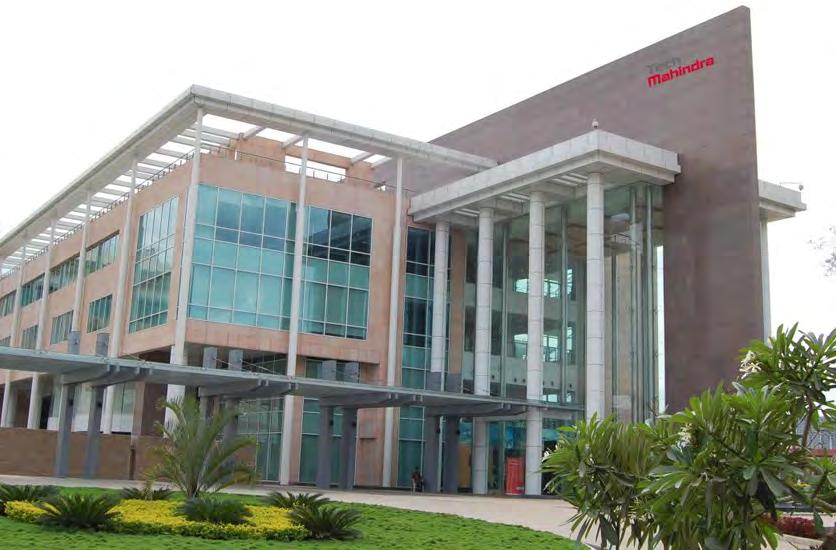
3 minute read
CYBER WARFARE REMAINS A REAL THREAT
Leaders of organisations will start to pay attention, investing more in the incident response and speed to limit the blast radius of such a cyber weapon.
Organisations will face more unknown cyber threats targeting onpremises systems, cloud infrastructure, and SaaS applications. The skills shortage is worsening too, causing analysts to becoming overloaded and burnt-out. Combined, this is creating a perfect storm, leaving organisations more vulnerable to a breach.
Organisations must adopt an effective detection and response strategy that reduces the burden on analysts, prioritising the most high-risk alerts. This means using tools that can identify the suspicious behaviours that an adversary will exhibit as part of an unfolding attack, flagging up these signals so organisations can stop an attack before it becomes a breach.
Supply chain attacks will continue but hackers will look beyond the ‘usual suspects’ to cause havoc. Attackers will continue to cause maximum disruption in the form of supply chain attacks, but instead of targeting key suppliers, they will look beyond the ‘usual suspects’ to gain access into networks. For instance, this could include legal or accounting firms.
A holistic approach may help turn the tables on the matter: supply chain means partnership, partnership means collaboration and supporting each other. Only as a ‘mesh’ interconnected structure with consistent resiliency can companies thrive in the digital economy. This includes ensuring that they review the security policies of all those in the chain.

CHRISTIAN BORST EMEA CTO, Vectra AI.

Traditional restoration procedures following a ransomware attack are both costly and time consuming for organisations; this is why in 2023 we will see organisations look to automation, via infrastructure as code, to reduce downtime.
Through infrastructure as code, organisations can develop scripts that enable key infrastructure to self-heal so they can automatically return to action. Ultimately rebuilding broken infrastructure from scratch is a far quicker process than restoring as a result of automation.
With identity attacks on the rise, in 2023 attackers will continue to take advantage of vulnerable MFA methods. As companies continue to roll out MFA, attackers will continue to take advantage, either by flooding end users with requests to brute-force their way in, or by skilled phishing campaigns. End users will be the ones directly targeted by attackers.
This means not just organisations, but also consumers will need to be more aware than ever of the risks to their digital identities. Meanwhile, organisations must ensure they have tools in place to detect suspicious login activity and stop it in its tracks.
Advances in quantum computing will force the hand of security leaders in 2023 to start thinking about this sensitive encrypted data in a post-quantum
Annual Trends
world. However, this approach will also grab the attention of attackers, and instead of bypassing encrypted data that was previously safeguarded, they will attempt to grab the data and keep it stored for sale or to be later decrypted.
Defenders should not rest on the laurels of encryption and start to take note of what NIST is doing in post quantum encryption this year for action in the coming years.
As an industry that is no stranger to burnout and stress, cybersecurity companies will have to ensure they can demonstrate they are an attractive outfit to work for. This is in order to fend off competition from tech companies that can often offer lucrative salaries and superior work-life balance. To achieve this, cybersecurity companies must adopt a more forward-thinking approach, this could include offering flexible working arrangements, performance incentives and health and wellness policies.
Increased analyst fatigue and resignation will see the tides turn away from protecting the castle walls to detection and response. Attackers are continuing to breach the castle walls, creating fatigue and eventual resignations amongst cybersecurity professionals. Instead of working on preventing these attacks from happening and to prevent employee burnout, we will see a needed shift to focus on reducing the impact of an attack.
This means building resilience within the organisation covering people, process and technology and focusing on early detection and sound response as opposed to protection and prevention.
Cyber warfare will remain a real threat in 2023, from a broader use of known TTPs to an unknown equity of zero days just waiting for the strategically right moment to deploy against one’s foes. Leaders of private and public sector organisations will start to really pay attention, investing more in the incident response and speed at which vulnerabilities are being handled in the coming year to limit the blast radius of such a cyber weapon. Posture, detection, and quick response will be paramount this coming year.
Labels should state clear facts about the privacy and information security parameters of the product and organisation. One key piece of information on labels should be how long a company will support its software, because a physical device may outlast the time a product is supported.
Regional SOCs need to introduce AI into their security mix. AI that eliminates the noise found in most of today’s IT environments, Neuhaus added. The right data, analysed the right way, will open the door to a new era of visibility and control for security teams. In this Attack Signal Intelligence framework, cyber actors’ tactics, techniques, and procedures become more obvious and allow security professionals to be more effective threat hunters. ë







